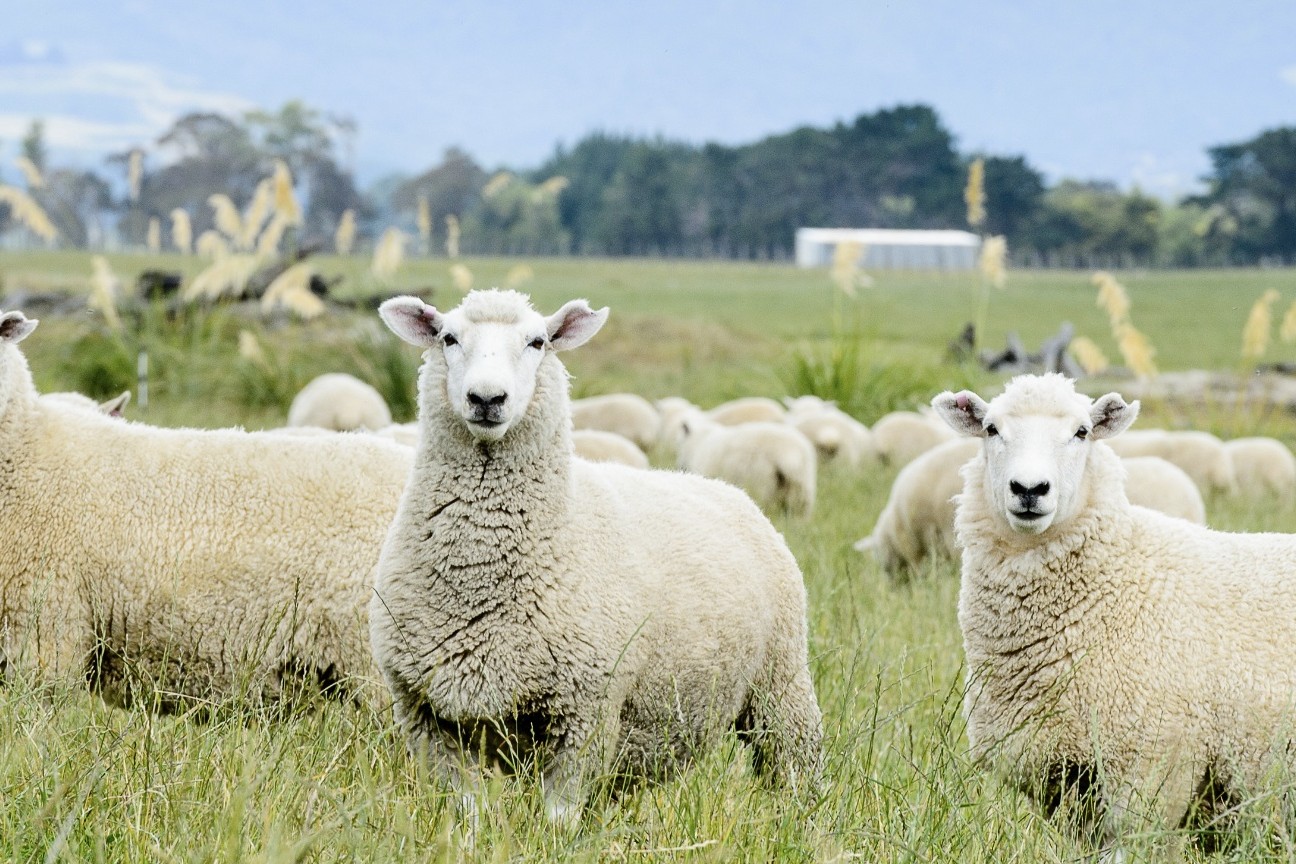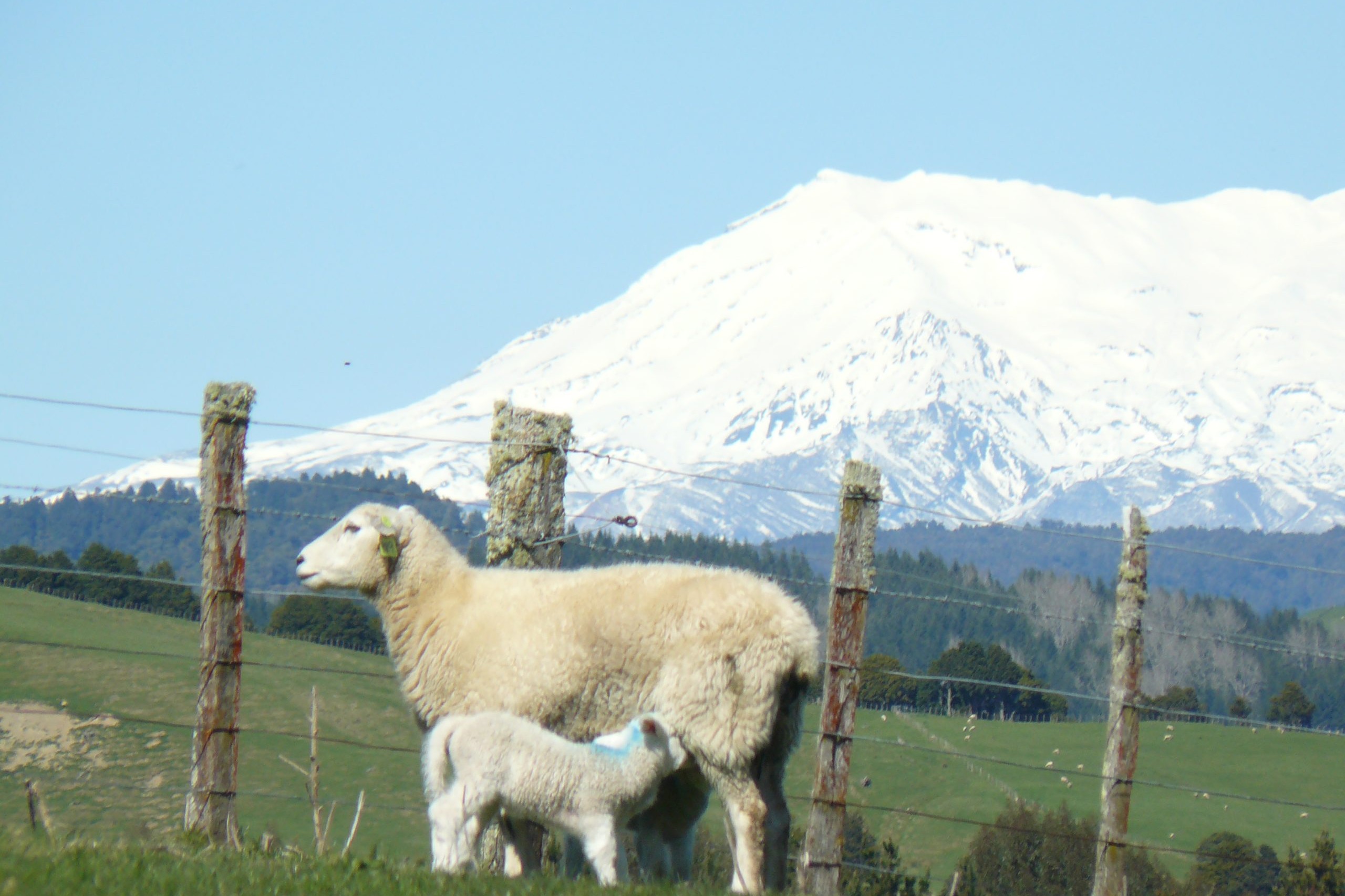When the going gets tough
Sheep and beef farmers are weathering a difficult season so we spoke to industry professionals about their advice for getting through tough times. Words Sandra Taylor.

It is undeniably going to be a difficult 12 months for sheep and beef farmers. The Beef + Lamb New Zealand (B+LNZ) Mid-Season Outlook (in March 2024) made for grim reading and while it’s tempting to draw comparisons to the difficult years of the 1980s, BakerAg Farm Consultant Ed Harrison says farm businesses are in a much stronger position to buffer the impacts than they were back then. Farm infrastructure wasn’t as good, soil fertility was low, and farmers didn’t have the genetics or management tools, such as Body Condition Scoring, that they have today.
Nevertheless, sheep and beef farmers are facing poor market returns, particularly for sheep, high interest rates and input costs with little respite on the horizon. Many are now also facing drought. It is during tough times that Harrison strongly recommends farmers make a plan to put structure around their decision-making. Under pressure, it is easy for fight or flight instincts to take over, neither of which are helpful. The ‘fight’ could see farmers making rash decisions such as wholesale farm system changes, while a ‘flight’ response can be crippling and lead to no decisions being made at all.
A plan brings clarity and rationality to the situation and allows informed decisions to be made rather than decisions driven by emotion. It also allows farmers to focus on the implementation rather than constantly thinking about whether they are doing the right thing.
Harrison says farming has gone through a purple patch in recent years and most businesses have some fat in the system which can now be cut out. This means looking at the business, assessing inputs and cost-structures, and identifying where the value lies. “Consider what makes money and what doesn’t.”
It is an opportunity to reset the farm strategy so that it is well placed to take advantage of stronger pricing in the future.
‘A plan brings clarity and rationality to the situation and allows informed decisions to be made rather than decisions driven by emotion.’ – Ed Harrison, Baker Ag
Harrison says a lot of costs in a farm business are fixed. These include animal health, staff, administration, rates and insurances. While there can be some tinkering with animal health and staff costs, it is difficult to make any significant savings with these.
The areas where farms can pull back on expenditure are in weeds and pests, repairs and maintenance (difficult for those affected by last summer’s cyclones) and the big one, fertiliser.
If soil fertility is high (Olsen P of over 15 in hill country and over 25 on flat land), it is possible to mine some of this fertility for a short time, but mining fertility for too long can undermine the farm’s productivity. This is where soil tests are valuable, as they allow for the strategic application of fertiliser, and the technology is available to ensure accurate placement.
Rather than looking at shrinking the farm business in these tough economic times, Harrison encourages farmers to focus on maximising production per hectare or per stock unit as a way to drive up revenue in relation to expenditure. This is the best strategy to lower the cost structure.
The top operators can consistently get this ratio below 60% by maintaining tight financial control, high per hectare or per stock unit production and capitalising on premiums where possible.
Top 10 ways for managing costs
Fixed costs
Wages
Average $200/ha or $22/stock unit (SU)
Harrison says there appears to be little appetite to remove costs from the wage bill as farmers recognise the value of capable and loyal staff. Salaries are not always a top motivator for staff with team culture, growth and learning opportunities and lifestyle being equally if not more important. These cost little to implement and generate a huge return on investment.
Businesses of 4000-5000 stock units often cannot justify a second full time labour unit, but they can be creative in the way they source labour. Contractors, job sharing and summer students are
all options.
Animal Health and Breeding
Average $65/ha or $7/su
The general consensus amongst BakerAg clients is that animal health is a fixed cost and policies must be maintained to protect animal health.
While the use of vaccines varies between farms and regions, these are risk-based decisions. As drench resistance becomes more widespread, the need to protect drench efficacy becomes more important.
Weeds, Pests and Farm Working Expenditure
Average $60/ha or $7/su
Expenditure cut-backs on weeds and pasture pests can impact on production and this is where monitoring and targeted spending is important.
Farm Working Expenditure includes electricity, dog expenses and freight and of these three, freight is the one where savings can be made. BakerAg report that they are seeing traders adjust their systems to reduce freight costs.
Administration
Average $35/ha or $4/su
It is difficult to cut costs on legal and accountancy support services. Farmers can minimise these costs by being organised and supplying all the required information.
Farmers also need to value their own skill set and not be afraid to bring in expertise when required rather than wasting time that could be better spent on other parts of the farm business.
Rates and Insurance
Average $54/ha or $5/su
While there is no hiding from rates, there is a huge variability in the cost of insurance. Key person risk and life insurance are the two that could be considered. Those at the start of their career should be adequately insured. Those at the other end could consider self-insuring.
Variable Costs Shearing
Average $70/ha or $12/su
An increasing number of sheep farmers are moving to an eight-month shearing policy and for good reason. BakerAg have calculated the net cost of shearing per ewe to be $3.02 for a 12-month shearing policy, $5.19 for a six month and $2.59 for an eight-month policy.
For a business moving from six-monthly to an eight-monthly shearing, they will save $2.60/ewe. For a business running 4850 ewes, this is a saving of $12,610 per year.
Feed and grazing
Average $55/ha or $6/su
Striking the right balance between the cost of establishing feed and making the best use of it is key to ensuring a good return on investment. Cropping costs have risen by nearly 50% in two years so it is critical to maximise the return on investment by careful planning and not cutting corners. This includes controlling weeds and addressing fertility in paddocks ear-marked for cropping well in advance and picking the best paddocks to grow crops in rather than taking a risk on paddocks with a higher chance of crop failure. The farm’s agronomist can be particularly valuable at this time. While skipping inputs could save money in the short-term, there may be yield penalties to pay. Know what to look for and understand the impact that weeds and pests might have on yield.
Under sowing crops with a secondary forage (kale or rape under sown with plantain) can reduce the risk of crop failure, reduces downtime between crops and secondary cultivation.
Vehicles
Average $40/ha or $4/su
Safety and practicality should be the primary considerations around vehicles, but financially, a side-by-side will cost on average $6124 or 61c/km more to own and operate than a quad.
Repairs and Maintenance
Average $60/ha or $7su
On many farms, this is where savings can be made. Greater cash returns over recent years have seen greater investment in capital projects. This is likely to be pulled back to a focus on general maintenance.
Fertiliser
Average $120/ha or $17/su
Farmers have been pulling back on their fertiliser, but this is not a long-term strategy. Trial work carried out in the 1990s showed that pasture production decreased by 12% over seven years when fertiliser was withheld on a low fertility site. On a high fertility site, pasture production dropped by 32% over seven years when fertiliser was withheld.
Before cutting fertiliser, farmers need to understand their soil’s most limiting factor and tailor their fertiliser programme around that. This means getting specialist advice and carrying out soil tests.
Focusing on Gross Farm Revenue
According to Harrison, farm revenue is striking the right balance of production (kilograms per hectare) and price (dollars per kilogram).
Some farmers will focus on production (bull finishers) while others will chase price and are willing to compromise some production. Early lambing operations are a good example.
Before cutting costs, BakerAg recommends farmers run a ruler over their farm system to ensure all of the drivers of production are performing at their optimum level. These drivers could include reproductive efficiency, pasture and forage crops grown, the use of supplements and feed conversion efficiency. It is useful to benchmark drivers with peers, and this can be done using on-line benchmarking tools (B+LNZ has one) or through farm consultants or discussion groups.
While it is difficult to influence prices, there are farmers who influence the value of their product. They have good market intelligence, know how to market their stock and have built strong relationships with their customers.
Managing cash and feed
Increasing productivity without adding costs is one of the most effective strategies for remaining profitable in tough financial times.
George Collier, Chartered Accountant and Director of ICL Chartered Accountants in Alexandra, encourages farmers to look for opportunities within their business to grow and utilise more feed to increase production. Grass is the cheapest form of feed.
Drawing examples from his practice’s long-term farm survey, he says costs are typically similar between the top and median performers, the difference is the top performers have a higher stocking rate, lambing percentage and production. Their economic farm surplus per stock unit is $98 versus $58/su.
‘The up cycles have always been longer than the down cycles.’ – George Collier, Chartered Accountant and Director of ICL Chartered Accountants
“Increasing productivity will reduce costs per stock unit.” He says the trick is to increase productivity without adding costs and this comes down to being more efficient at converting feed into saleable product. Long-term cost reductions come down to managing feed, which Collier described as being the core constraint and the core cost in any farming business. Reducing feed costs by matching the farm system to the pasture growth curve, maximising the use of pasture while minimising the use of supplementary feed and managing pastures to maintain quality to drive pasture regrowth will all help with long-term cost reduction.
He says modelling a pastoral farming system through integrated feed and livestock modelling software, such as Farmax, allows farmers to explore different livestock options to better match feed supply and feed demand. It also calculates the relative return on a cents per kg basis for different livestock classes. This will highlight possible options to develop an overall optimum farm system. “Farmax can also identify opportunities for improvement within each livestock class and help set performance targets.”
He says having quality information is important when making proactive management decisions, particularly during tough times.
Collier’s tips on reducing farm expenses in the short-term include slowing the pasture renewal cycle by double-cropping, using contractors instead of employees (saving wages, accommodation and vehicle costs), stopping development and thinking abouts needs versus wants. “Postpone principal repayments for 12-24 months but climb back on the bus when the inevitable upswing occurs and restart with small one-off lump sum payments.”
He says drawings are an issue for some farming businesses (the mean drawing in the ICL survey was $72,000/annum or $1,400/week). Collier suggests setting up an automatic payment from the farm account into a personal account, while minimising both personal expenses and spending on farm cards.
Tax payments can be delayed through Tax Management NZ or through arrangements with IRD and there may also be an opportunity to revise tax payments downwards particularly this season.
Other options for generating cash include cashing-up life insurance, sub-dividing and selling off land, selling surplus machinery, onfarm tourism options, looking at opportunities within the Emissions Trading Scheme (ETS) and generating income through a partner going off-farm to work.
Benchmarking the farming business for income and costs against similar farming systems can have real value in terms of identifying opportunities to either improve income or reduce expenditure.
Sources for this information could include B+LNZ, accounting farm surveys, farm consultant comparison groups and banks.
There is no substitute for mixing with progressive farmers, getting off the farm, networking widely and getting top advice.
Looking back at the financial performance of sheep and beef farms over the past 22 years, Collier said while there have been some roller coaster years, generally the balance sheet has gone from strength to strength. “The up cycles have always been longer than the down cycles.”
George Collier’s advice for managing tough financial times
- Managing cash is key.
- Consider what an optimal farm system looks like: model options for high revenue and medium cost.
- Know what the key production benchmarks are in your business.
- Maintain fertiliser applications over the medium term. Possibly skip phosphate for a year or two if Olsen P levels are high, but sulphur should still be applied.
- Communicate with the bank, your trusted team and friends.
- Benchmark your income and expenses with other similar farming businesses.
- Levers can be pulled to reduce expenses, increase income or delay cash outgoings, but you need a robust medium to long-term strategy.
- Down cycles tend to be much shorter than the up cycles.
- Dig deep and hang in there.




